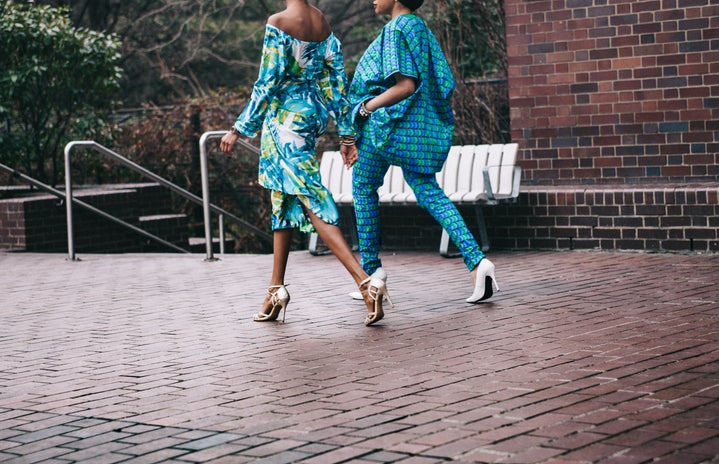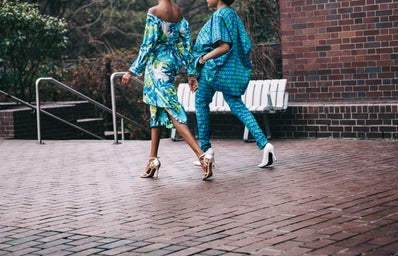It’s more common these days to dress in a way that shows your personality and your individuality. There are still trends out there that influence the way that we dress, but there has been a shift towards a more expressive attitude about fashion.
A lot of the trends now, particularly “hipster” trends, have been influential. They include beards and cuffing pant bottoms. Asides from this, it’s apparently becoming trendy to wear dresses with jeans and for some time now, to wear henna. While these may be relatively new trends, Muslims have been doing these for an extremely long time. The beard and cuffing pants also apparently follows Sunnah, which is the way of the Prophet Muhammad.
Photo Credit: Maria Alia @mariaalia
A lot of Muslims are very happy about this, since it shows that Islam has an increasing influence. If it’s something that looks cool, people will wear it. That’s the way all trends are, and (almost) everyone partakes in it. However, some feel if there’s anything that people should be adopting from Islam, it shouldn’t be the way we dress but rather some of the principles like giving to charity. It’s not the preferred thing that they wanted to get adopted into mainstream culture. It still however promotes the idea of modesty. It’s modest, but it still looks really good.
However, some people feel that while it’s really cool that more ethnic and traditional clothing are becoming mainstream, it’s only okay if it’s your own, and not someone else’s. It’s like these companies, while advocating for more cultural clothing, are profiting off of it. Some feel like they would rather go and visit the actual countries to buy these clothes and accessories rather than let someone in the Western world profit over it.
Photo Credit: Sania @sanias
As all of these ethnic and traditional clothing become in style and trendy, more Muslims feel more comfortable wearing it outside. There’s still a long way to go until full acceptance, considering that some felt that they still couldn’t get out of the car when wearing full traditional garb.
However, the acceptance seems to have increased as we aged. A lot of Muslims mentioned that it was harder to wear traditional clothing while they were in middle school compared to now. Now peers are less vicious, they have better support groups, and they are more at peace with their cultural identity. A lot of people I knew growing up, including myself, struggled with the idea of cultural identity. Since your peers would shun your culture you began to shun your own culture, refusing to partake in certain things. It’s hard to embody something that people make fun of you for. I used to refuse to watch Bollywood movies because of this. Now that it’s become more accepted, you don’t have to second guess yourself when you step outside in a shalwar kameez or a kaftan. As we gain a better support circle, people accept you for who you are, culture and all, and that’s when you can truly understand what your own cultural identity is.


